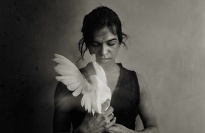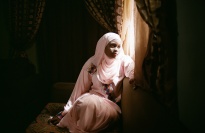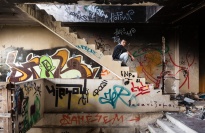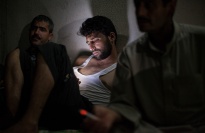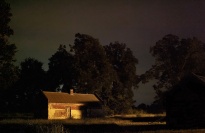About Moving Walls 23
On display at Open Society Foundations–New York from October 22, 2015, to September 30, 2016.
The photographers in Moving Walls 23: Journeys honor the audacity, resourcefulness, and creativity of people carving out new opportunities and realities. Whether escaping the bondage of slavery, fleeing war and hardship, or creating spaces to make their voices heard, they are all pursuing avenues toward a more self-determined future.
Jeanine Michna-Bales envisions one possible journey—from Louisiana to Canada—along the Underground Railroad. Her images memorialize the places, people, and forms of knowledge that aided countless African Americans who resisted enslavement and took great risks to escape bondage in the nineteenth century.
Liam Maloney and Dionysis Kouris focus on a more contemporary migration. In Maloney’s portraits, Syrians fleeing civil war await news from loved ones back home while living in an abandoned slaughterhouse in Akkar, Lebanon, near the Syrian border. Text messages emerge from the glow of their mobile phones and serve as beacons connecting them to home.
In Greece, Kouris photographs North Africans living in a deserted Columbia Records factory and recording studio. Photographed between 2010 and 2012, they had left home seeking better economic opportunity in Europe. Their stories remain significant today, as Greece faces an influx of people attempting to migrate across its borders.
Shahria Sharmin and Glenna Gordon focus on journeys of another kind. Sharmin’s portraits and nature studies reflect on the path to personal fulfillment and social acceptance for hijras in Bangladesh. Hijras are born either male or intersex, embrace a feminine identity, and are officially recognized as a third gender in Bangladesh. In the face of discrimination, many hijras create alternative forms of emotional and financial support.
In northern Nigeria, Gordon photographs women authors of littattafan soyayya, “love literature” in the Hausa language. The genre combines aspects of morality tales and romance novels. Through writing, these authors make their voices heard, earn a modest income, and help women readers navigate their daily lives and relationships.
Collectively, these stories celebrate the strength of people on physical and metaphoric journeys toward in search of liberation and highlight the people, places, and relationships that sustain them along the way.
